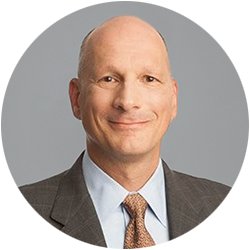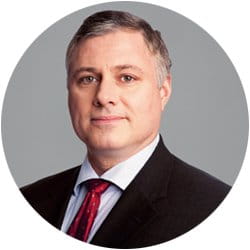As interest rates soar, find out why choosing corporate bonds could provide attractive yields.
It’s an understatement to characterize 2022 as challenging for fixed income markets. Some might even call it terrible. Global central banks showed steadfast determination to return inflation to manageable levels. The result has been higher rates, an inverted yield curve, and increased concerns of a pending recession. This historically hawkish period has produced equity-like bear-market returns for the investment-grade (IG) corporate bond market, with the ICE BofA US Corporate Index down 18.3% through September 30.
While tighter monetary policy hit longer-maturity bond prices the hardest, yields on the front end of the corporate curve have risen sharply. This is in response to the five federal funds rate increases totaling 3.0%. The two-year and five-year US Treasury rates have risen by over 350 basis points (bps) and 280 bps, respectively, since the beginning of the year, helping to push the yield on the ICE BofA 1–5 Year AAA–A US Corporate Index to a 13-year high of 5.2%. This yield far surpasses the high-water mark of 3.9% set during the worst of the pandemic sell-off in 2020 and is nearly 100 bps higher than the 4.3% yield offered on the ICE BofA US High Yield Index at the start of the year.
Higher rates took a heavy toll on performance. With the index down over 7% year to date, this is the worst performance in the first three quarters of the year ever, exceeding the -5.1% loss incurred in the same period during the 2008 financial crisis. The index has only posted negative annual returns since 1998 on three occasions, two of which (1994 and 2021) were only modestly negative at less than -1%. It took the extreme dislocations of the 2008 crisis to produce a significant negative full-year return of -3.2%. In the years following the negative returns in 1994 and 2008, the index enjoyed very strong performance. As is often the case in financial markets, we find the best-performing time periods can follow the worst-performing ones.
While it’s unlikely that the Fed will end its rate-hiking cycle this year, corporate bond yields have risen to attractive levels. This is particularly true of shorter-maturity (one- to five-year) high-quality (A- to AAA-rated) corporate bonds. This part of the curve is flatter, allowing investors to pick up a significant amount of the yields available on longer indexes with far less duration risk. At the end of the third quarter, the index offered 89% of the yield of the overall IG bond market with only 39% of the duration and no exposure to BBB issuers. Compared with 50% BBB exposure and more than double the duration for the broader corporate bond index, it’s a compelling investment opportunity.
We believe all investments should be evaluated in terms of their real yields, which is the yield of an investment after accounting for the effect of expected inflation. To estimate real yield, we use the 10-year Treasury Inflation-Protected Securities breakeven (BE) rate, which represents the market’s current expectation of average inflation over the next 10 years. This rate was 2.2% at quarter end. With an index yield of 5.2%, the difference between the two rates implies that an investor could earn a real return of nearly 3.0% after inflation. The difference in these rates hasn’t sustained this level since 2009.
As interest rates soar, find out why choosing corporate bonds could provide attractive yields.
History suggests that an inverted US Treasury curve is an early warning sign of economic weakness. While corporate spreads have widened modestly this year, they remain well below recessionary levels. Corporate fundamentals remain strong, with IG companies using the low-rate environment of the last two years to improve their balance sheets and insulate themselves against a rising rate environment. As a result, they would go into an economic slowdown with interest coverages at record-high levels.
While more difficult times likely lie ahead for corporate earnings, the credit cycle currently remains positive, with upgrades continuing to exceed downgrades. The 2020 recession removed over $200 billion of fallen angels from the IG corporate bond market, significantly reducing the number of potential downgrades. We expect significantly less spread widening than in past recessions because of these companies’ stronger balance sheets.
The Fed has indicated its commitment to returning inflation to its long-term trend, though it will take some time for its policies to make a meaningful impact on consumer prices. While household spending remains firm, energy prices have quickly fallen. The negative wealth effects from declining equity and home prices should eventually lead to slower growth and lower inflation, albeit on a lagged basis.
This tightening cycle has produced the most attractive corporate bond yields of the last decade. Interest rate and credit spread volatility are likely to remain elevated, but short-term high-quality corporate bond yields are now particularly compelling, especially when inflation expectations are considered.









